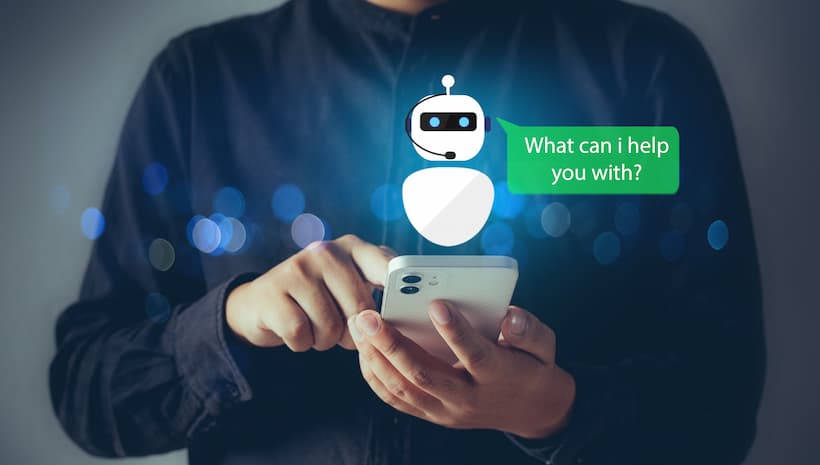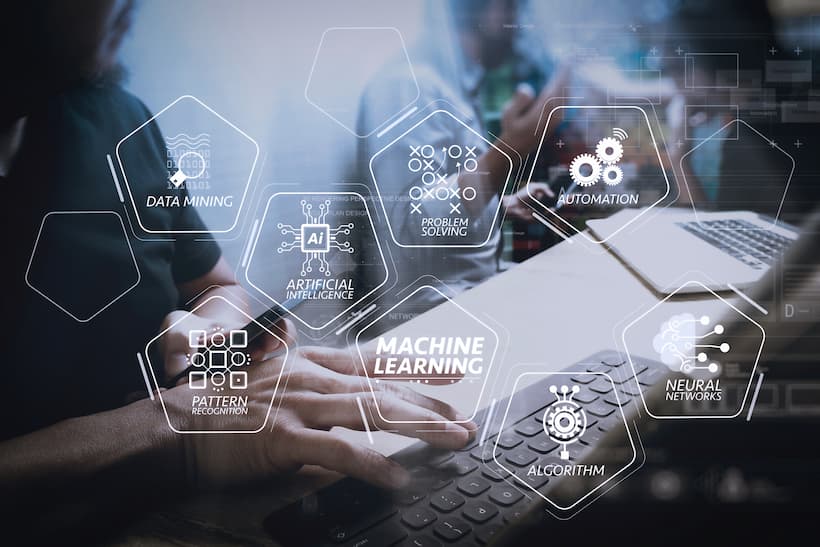AI speech recognition is changing how we talk to computers by turning our spoken words into written text. It’s being used in many areas like customer service, healthcare, education, and to help people with disabilities. In this article, we’ll look at how this amazing technology works, the tools that make it possible, and the different ways it’s being used.
We’ll also discuss some challenges and what the future might hold for AI speech recognition. Get ready to explore this exciting world of talking machines!
Talking to Machines: The AI Innovation Behind Voice Recognition

AI speech recognition is all about turning our spoken words into written text. It starts by capturing what we say, breaking it into smaller parts, and then figuring out what those sounds mean. Different steps and techniques work together to make sure the text matches what we said as closely as possible.
Acoustic Modeling
Acoustic modeling helps the AI understand the sounds we make when we talk. It learns how different sounds are formed and how they change based on accents or speaking styles. This way, the AI can recognize and interpret these sounds accurately, even when different people say the same words.
Language Modeling
Language modeling is another important part of AI speech recognition. This step helps the AI predict the words that might come next in a sentence, based on the words it’s already heard. It takes into account grammar, common phrases, and context, making sure the AI can understand the way people naturally speak.
Decoding and Transcription
Decoding and transcription is the part where AI turns the sounds it has analyzed into written text. The AI uses the acoustic and language models to figure out which words are being said and then writes them down. It’s like having a super-fast typist listening to you and typing out everything you say.
Advancements in Deep Learning and Neural Networks
Deep learning and neural networks are advanced techniques that have helped AI speech recognition become more accurate and efficient. These systems are inspired by the way our brains work and can learn from large amounts of data, making them better at understanding and processing speech. The more they learn, the better they get at recognizing different voices, accents, and languages.
Talk the Talk: Unlocking the Potential of Speech AI Applications and Tools

The world of speech AI applications is vast and full of potential, empowering us to communicate more effectively and access information with ease. These innovative technologies and tools, such as Automatic Speech Recognition systems, Natural Language Processing, voice assistants, and real-time transcription services, are transforming our daily lives and reshaping various industries.
As we unlock the potential of speech AI, we pave the way for a more connected and accessible future, where communication barriers are broken, and our voices hold the key to new possibilities.
Automatic Speech Recognition (ASR) Systems
Automatic Speech Recognition, or ASR, is a technology that helps computers understand and convert spoken language into written text. ASR systems are the backbone of AI speech recognition, enabling voice commands, transcription services, and voice assistants to work effectively. They have become more accurate and powerful over time, thanks to ongoing research and advancements in AI.
Natural Language Processing (NLP) and Understanding (NLU)
Natural Language Processing, or NLP, helps AI understand the structure and meaning of human language, while Natural Language Understanding, or NLU, focuses on grasping the context and intent behind the words. These two technologies work together to help AI interpret and respond to our spoken words more naturally, allowing for more meaningful interactions and smarter voice-activated applications.
Voice Assistants and Smart Speakers
Voice assistants, like Siri, Alexa, and Google Assistant, are popular AI-powered tools that use speech recognition to follow voice commands and answer questions. They can be found in smart speakers, smartphones, and other devices, making our lives easier by providing hands-free control and instant access to information. These tools rely on advanced speech recognition technology to understand a wide range of accents, languages, and speaking styles.
Real-time Transcription Services
Real-time transcription services convert spoken words into written text almost instantly, making it easier to follow along with speeches, presentations, or meetings. They are especially helpful for people with hearing difficulties, as well as for those who need to translate languages on the fly. AI speech recognition technology is at the heart of these services, enabling fast and accurate transcriptions that help people stay connected and informed.
Innovating with Sound: The Expanding Applications and Use Cases of Speech Recognition Software

Speech recognition technology is revolutionizing the way we interact with our devices and the world around us, making communication more efficient and accessible.
From assisting people with disabilities to powering virtual assistants and revolutionizing industries like healthcare and law enforcement, speech recognition software is continually expanding its applications and use cases.
As we delve into this innovative world, we’ll discover how the power of voice is reshaping our daily lives and driving progress across various sectors.
Accessibility for People with Disabilities
Speech recognition software helps make the world more accessible for people with disabilities. For those who have trouble typing or using a keyboard, voice commands can control devices and software. It also helps people with hearing impairments by providing real-time transcriptions of spoken words, ensuring they don’t miss out on important conversations or information.
Healthcare and Medical Transcription
In healthcare, speech recognition software helps doctors and medical professionals by transcribing their spoken notes into electronic records. This saves time, reduces the risk of errors, and improves the overall efficiency of healthcare systems. It can also be used in telemedicine, where AI can transcribe consultations and provide real-time translations when needed.
Legal and Law Enforcement Transcription
Speech recognition software is valuable in legal and law enforcement settings, where accurately transcribing spoken words is crucial. It can help create transcripts of court proceedings, police interviews, and witness statements. This not only saves time but also ensures that records are accurate and easy to search.
Language Translation and Learning
Speech recognition technology is transforming the way we learn and translate languages. By converting spoken words into text, AI-powered tools can provide instant translations or offer language learners feedback on their pronunciation and grammar. This makes learning a new language more accessible and efficient.
Smart Home Devices and Automation
Smart home devices, like thermostats, lights, and security systems, often use speech recognition software to enable voice control. This makes it easy to manage your home with simple voice commands, providing a more convenient and hands-free experience. As AI speech recognition continues to improve, smart home devices will become even more intuitive and user-friendly.
Beyond the Echo: Addressing the Challenges and Limitations in the Evolution of Voice Recognition

As this technology continues to advance, it brings with it a set of challenges and limitations that must be addressed to unlock its full potential. From improving accuracy and handling diverse accents to tackling privacy concerns and ethical considerations, overcoming these obstacles is crucial for the technology to thrive.
By acknowledging and confronting these issues, we can pave the way for a more inclusive, secure, and effective voice recognition landscape, allowing us to harness the true power of our voices.
Accuracy and Error Rates
One of the main challenges of speech recognition technology is achieving high accuracy and low error rates. While the technology has improved over time, it can still struggle with background noise, unclear speech, or multiple speakers talking at once. These factors can lead to misunderstandings or incorrect transcriptions, which can be frustrating for users and impact the overall effectiveness of the system.
Handling Accents, Dialects, and Language Variations
Voice recognition systems can sometimes have difficulty understanding different accents, dialects, or language variations. People from various regions or countries might pronounce words differently, use unique phrases, or speak in a way that the AI isn’t trained to recognize. This can be a challenge for developers, who need to ensure their systems can accommodate a wide range of users and speaking styles.
Privacy and Security Concerns
As voice recognition technology becomes more widespread, privacy and security concerns arise. Since voice data can be sensitive and personal, users may worry about who has access to their recordings and how the information is stored. Ensuring robust security measures and transparent data handling practices are essential to protect users’ privacy and maintain their trust.
Ethical Considerations and Biases
Speech recognition technology can sometimes be influenced by biases present in the training data, leading to unfair treatment of certain groups or individuals. For example, an AI system might be less accurate when transcribing speech from people with specific accents or genders. Developers must address these ethical considerations and work to eliminate biases to ensure that the technology is fair, inclusive, and benefits everyone equally.
The Sound of Tomorrow: A Glimpse into the Future Trends and Developments of Speech Recognition Systems

As speech recognition technology continues to advance, it holds the promise of transforming the way we interact with devices and each other. From improving accuracy and real-time capabilities to expanding into new industries, the potential applications of this groundbreaking technology are vast.
In this exploration of the future trends and developments, we will take a closer look at what lies ahead for speech recognition systems and how these innovations will shape the way we communicate in the coming years.
Improving Accuracy and Real-Time Capabilities
In the future, we can expect speech recognition technology to become even more accurate and efficient. Researchers and developers will continue to refine algorithms and expand training data to improve performance. Real-time capabilities will also improve, making it possible for users to experience faster and more seamless interactions with their devices using speech-to-text systems.
Multimodal Artificial Intelligence Systems
The future of speech recognition will likely involve the integration of multiple forms of artificial intelligence. Multimodal AI systems combine various inputs, such as speech, text, and visuals, to deliver more comprehensive and context-aware solutions. These advanced systems will allow for better understanding and interpretation of user commands, enhancing the overall user experience.
Expansion into New Industries and Applications
As speech recognition technology becomes more sophisticated, it will find its way into new industries and applications. From education and entertainment to manufacturing and transportation, the potential uses for speech-to-text systems are vast. This expansion will lead to increased accessibility, productivity, and efficiency across various sectors.
Addressing Ethical Concerns and Establishing Regulatory Frameworks
As speech recognition technology continues to evolve, addressing ethical concerns and establishing regulatory frameworks will become more critical. Ensuring that systems are unbiased and that user privacy is protected will be crucial for maintaining public trust.
Policymakers and industry leaders will need to collaborate to develop guidelines and regulations that promote responsible and ethical use of speech recognition technology.
Conclusion
In summary, artificial intelligence speech recognition technology has already made significant strides in transforming the way we communicate and interact with devices. From accessibility for people with disabilities to streamlining various industries, the potential of speech recognition technology is immense, and its applications are continually expanding.
Emphasizing the Importance of Continued Research and Development
To fully realize the potential of speech recognition technology, it is crucial to continue investing in research and development. Improving accuracy, handling diverse accents, and addressing ethical concerns are just a few of the challenges that must be overcome. By dedicating resources and efforts to advance this technology, we can unlock even more possibilities and drive innovation.
Encouraging Adoption and Responsible Use of the Technology
As speech recognition becomes more prevalent, it is vital to promote its adoption across various sectors while ensuring responsible use. By embracing this technology and using it ethically, we can improve accessibility, boost productivity, and create a more connected world. By fostering a future where artificial intelligence speech recognition is widely used and responsibly managed, we can create a more inclusive and efficient society for all.
Frequently Asked Questions
1.How does ambient noise affect speech recognition performance?
Ambient noise can negatively impact speech recognition performance by making it harder for the system to accurately identify spoken words. Advanced noise-cancellation algorithms are often used to mitigate this issue.
2.Are there any open-source speech recognition tools or platforms available for developers?
Yes, there are open-source speech recognition tools, such as Mozilla’s DeepSpeech, Kaldi, and CMU Sphinx, which provide platforms for developers to build custom speech recognition applications.
3.How can I improve the accuracy of speech recognition on my device?
To improve speech recognition accuracy, ensure that your device has a good quality microphone, speak clearly and at a moderate pace, and minimize background noise as much as possible.
4.How does emotion recognition fit into the speech recognition landscape?
Emotion recognition is a related field that analyzes vocal cues to identify the emotional state of the speaker, enhancing the ability of speech recognition systems to interpret and respond to spoken language more effectively.
5.How do speech recognition systems handle code-switching or multilingual speakers?
Speech recognition systems typically struggle with code-switching and multilingual speakers. However, advancements in machine learning and larger, more diverse training datasets can help address these challenges.
6.Can speech recognition technology detect and filter out profanity or sensitive content?
Some speech recognition systems can be trained to detect and filter out profanity or sensitive content, allowing for customizable content moderation according to user preferences.
7.How can businesses leverage speech recognition technology to improve customer experience?
Businesses can leverage speech recognition technology to enhance customer experiences through voice assistants, automated customer support, improved accessibility, and more personalized services.
8.Are there any specific hardware requirements for implementing speech recognition systems?
While specific hardware requirements for speech recognition systems may vary, a good quality microphone, sufficient processing power, and adequate storage capacity are essential for optimal performance.